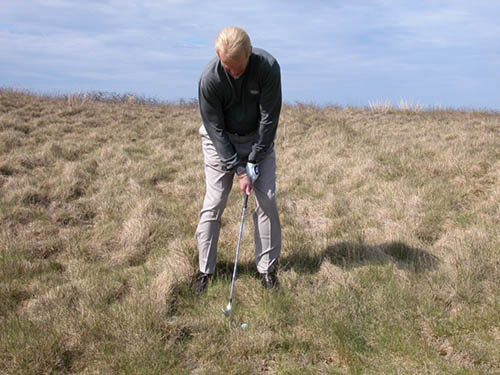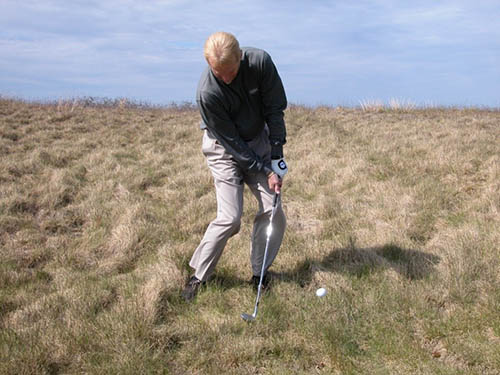So Near, Yet So Far Away: How to Handle Greenside Rough

A Legacy Post by Keiser University College of Golf Senior Faculty and Director of Research Dr. T. J. Tomasi (1940-2023)
What is the Rough in Golf?
The rough in golf refers to the areas of thicker grass located alongside fairways and around greens. It serves as a penalty for inaccurate shots, adding challenge to the game by making it harder to advance the ball towards the target. The grass in the rough is often longer and denser than the fairway, making it difficult for golfers to strike the ball cleanly and control its direction and distance. Additionally, the rough may contain various obstacles such as uneven lies, buried lies, or thick patches of grass, further complicating the shot.
Hitting out of the rough requires precise technique and adjustment to account for the challenging conditions. Golfers must strike the ball with more force to penetrate the thicker grass and reach their intended target. However, the unpredictable nature of the rough can lead to inconsistent contact and direction, increasing the risk of errant shots. Furthermore, the longer grass tends to grab the clubhead, reducing the golfer’s ability to generate spin and control over the shot’s trajectory. Overall, navigating the rough requires skill, strategy, and adaptability to overcome obstacles and successfully advance the ball toward the hole.
Types of Rough in Golf
There are various types of rough, each affecting gameplay differently. Primary rough, located adjacent to fairways, is typically longer and thicker, penalizing errant shots and requiring precision to escape. Secondary rough, further from the fairway, may be shorter but still presents difficulties in advancing the ball toward the green. Greenside rough, found near putting surfaces, demands delicate touch and precise shot-making to navigate successfully. Additionally, deep rough, often located farther from play areas, can significantly hinder a player’s ability to advance the ball toward the target. Understanding and effectively managing different types of rough are essential skills for golfers seeking to improve their performance on the course.
In the photos below, I may be near the green, but from this lie, I’m ‘far, far’ away from making a par. In fact, I’m lucky to be able to see the ball in this long rough – but while this is a tough shot (that’s why they don’t call it “the easy”), there are a few adjustments I can make to limit my losses.
How to Get Out of Thick Rough in Golf
- The club head should rest on its heel, with the toe of the club off the ground.
- Stand further from the ball with your hands lower than normal. This ensures preset wrists and creates a steeper angle of attack that mitigates the effect of the grass behind the ball.
- Aim slightly right to allow for the pull caused by the deep grass grabbing the neck of your club. It’s this twisting of the club face into a closed position at impact that pulls the ball off line.

I’m careful not to sole the club for two reasons: (1) If I press down too aggressively, it could be construed that I’m improving my lie, which is against the rules. (2) I can’t be sure exactly how much grass is under my ball — it may be sitting precariously on a little tuft I don’t even see – so the act of soling the club head dislodges the ball from its original position = another penalty under the rules.

Note how I retain the cup in my right wrist. This assures that the club head doesn’t flip over through impact. The long grass will wrap around the neck of the club, and if my wrists buckle under the strain, the ball will squirt low and left. The other key is that I keep my knee flex while I drive my knees through the ball toward the target. The tendency is to rise up trying to help the ball out of the grass, so my focus on keeping my knees flexed is a palliative to keep from hitting it skinny.
Learn more!
Want more tips? If you want to take your game to the next level, contact our team at Keiser University’s College of Golf & Sport Management today. With our dedication and experience, we can elevate your game to new heights together. Give us a call today at 888-355-4465.














